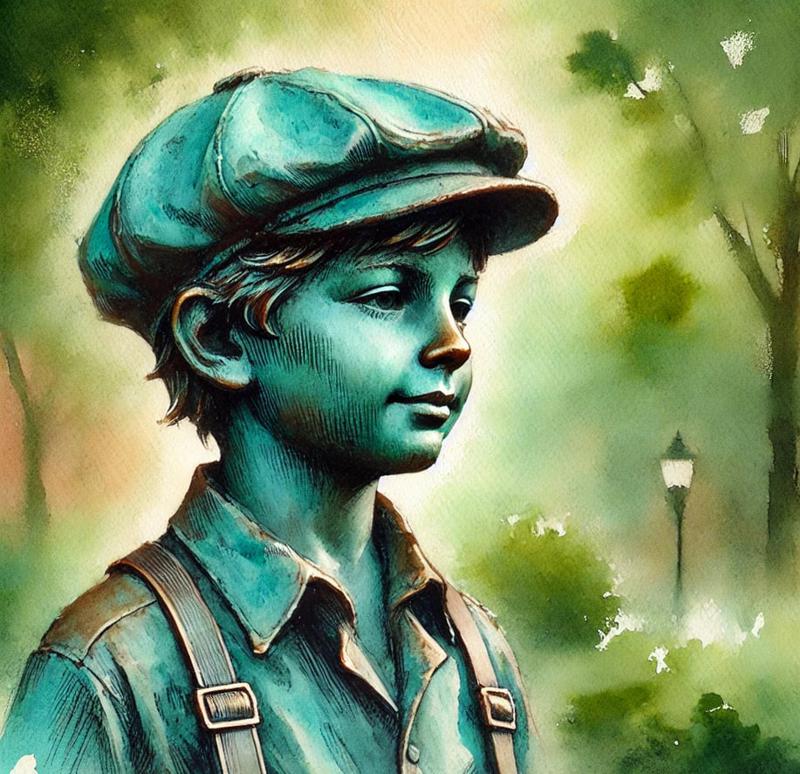



|
|
||
 |
||
 |
||
 |
||
| Home About Contact | ||
 |
New Postcard Design for the City of WeißenfelsFor 21 years now, the company Simon-Werbung from Weißenfels has come up with a little treat for the visitors of the Schlossfest parade (which has become part of the city festival in recent years). This year marks the twenty-first postcard release. 5,000 lucky visitors can look forward to the widely beloved "Schusterjunge" of Weißenfels. 
This figure was chosen not without a small ulterior motive, as Simon-Werbung will soon publish a child-friendly, color-illustrated booklet featuring the popular "city mascot" — but more on that later. The Schusterjunge is a statue located in the city park of Weißenfels. It represents the artist Paul Juckoff’s apprentice, young Ernst Hofmann. Like was customary at the time, the boy was a breadwinner for his family. He lived with his widowed mother and eight siblings in Skopau. His cheerful spirit impressed the artist, who used him as a model for several of his sculptures. Juckoff was commissioned by the Oettler brothers, the brewery owners in Weißenfels, to create a playful figure to welcome visitors to the brewery. The task seemed easy for Juckoff, and he created a form from which two bronze casts were made. The boy looked cheerful, and with his familiar yet innocent demeanor, he quickly won the favor of the brothers. For several years, the cheerful boy stood at the entrances of the breweries in Weißenfels and Zeitz. However, with the arrival of larger vehicles, he unfortunately became an obstacle. So the Oettler brothers almost simultaneously decided to gift the jovial fellow to the cities. At that time, parks were being established in both cities. In Weißenfels, the beautification association took care of the boy and placed him on a sandstone pedestal. There he was publicly displayed until World War II. Then, however, the order came from the Reich Economic Main Office, which was responsible, among other things, for procuring war-essential raw materials. Besides iron and steel, bronze had to be handed over as well. They wanted to spare the little fellow this fate and sawed him off the pedestal. He remained hidden in the Leißlinger Forest until after the war and was returned to the city park in a "night and fog operation." Since then, he has been there (with a brief interruption of half a year when he was restored in the "non-socialist foreign country") and delights visitors with his presence. The persistent belief is that he brings good luck if you rub his elbow or big toe. Author: AI-Translation - Nadja Laue (Stadtführerin in Weissenfels) | 20.08.2024 |

|
| Other articles: |
 | Jurisdictional Buck-Passing: When Authorities Prefer Shuffling Papers Over Saving LivesIt is a well-known performance on the political stage: as soon as responsibility is in the room, offices, agencies, and ministries begin a dance theater of jurisdictional buck-pass... zum Artikel |
 | Protest Convoy with the Farmers! Monday Demo Zeitz! April 29, 2024A video about the car convoy of the Monday demo in Zeitz on April 29... zum Artikel |
 | I don't want this coldness and so much hate everywhereSay it with a song.... zum Artikel |
|
Support the operation of this website with voluntary contributions: via PayPal: https://www.paypal.me/evovi/12 or via bank transfer IBAN: IE55SUMU99036510275719 BIC: SUMUIE22XXX Account holder: Michael Thurm Shorts / Reels / Kurz-Clips Imprint / Disclaimer |